Coniferous plants have always been popular among gardeners and landscape designers and used to decorate a nice or country garden. Pines are especially loved, which are about 100 species, characterized by the height of the trunk, the form of the crown, the conditions of cultivation. Pine trees are not only an important element of artificial gardening, but also an excellent air purifier, material for cosmetics and medical drugs. Pine Black or Nigigra is one of the bright representatives of this family.
It is a beautiful and magnificent tree with a pyramidal crown at a young age and an umbrella in an older. On the Internet, you can find a large number of photos of black pines, describing its huge height and decorative crown. But the most amazing, such a big tree you can easily grow on your site or even in the room. For this, many dwarf varieties of black pine are derived.
In this article, consider the description and features of the Pine Family, we present the characteristics of the most popular varieties of black pine and mentioning important moments of growing this coniferous tree.
Features and description of pine black
Pine is an evergreen coniferous plant, the generation of which includes approximately 100 species, characterized by appearance, the arrangement of the needles and its tint, trunk height and the size of the cones. The natural area of \u200b\u200bhabitat of pine trees is the territory of the northern hemisphere, especially mountainous areas and areas with temperate climates. Black pine is found in the highlands of Central Europe, in particular in the Carpathians, the Alps and in the Balkans. This type of pine prefers stony slopes, so sometimes you can meet a little different name - pine black or Austrian mountain. The Austrian black pine is called due to the fact that many varieties of this coniferous tree grows precisely on the mountainous slopes of the Alps.
Pine is a very beautiful and majestic long-lived tree, which from ancient times admired people. And this, in turn, gave rise to a large number of legends and legends associated with the origin of the title of coniferous wood and the healing force of pine. Our ancestors were always considered a pine symbol of immortality and vitality due to evergreen needles. Therefore, always in the house there was a paw of the needles, which changed only once a year. It was used as protection against evil forces and brought well-being and happiness to the house.
The Latin Name of Pine originated from the Celtic word "PIN", which translated the "rock, mountain growing on the rock". This is due to the fact that most types of pine grows precisely on mountainous terrain. There is another version of the origin of the name of this coniferous tree - from the Latin word "PIX", "PICIS", in translation denoting "resin or resinous tree". The very appearance on Earth of this beautiful coniferous tree is associated with an ancient Greek legend. The words Pinus, the Latin Name of Pine, has happened on behalf of one of the Nymph Morning Dawns. Called her Pitis. She for a long time suffered from the permanent claims of God's strong wind Borea, until one day turned into a beautiful and slender tree to escape. Hence the coniferous tree of pine appeared.
Black pine was introduced into the culture and began to be grown on household sites and parks in 1759 and has since received great distribution and popularity.
Black Pine Description:
- Black pine is an evergreen coniferous tree, which in the wild grows mainly in the mountains and temperate climates of Europe.
- This tree has a powerful rod root with a very long root system.
- The height of the black pine is average of 15-40 m, so it is important to carefully pick up a tree of wood so that in the future an adult culture does not cover their shadow all the growing plants.
- Black pine grows approximately at a height of 1500 m above sea level and prefers specifically the southern slopes.
- This kind of pine is distinguished by a beautiful decorative crown, which can be different depending on the variety of black pine and from its age. Younger trees have a pyramidal form of the crown, and in adult copies it becomes umbrella.
- The diameter of the crown can also be different, on average is 9-15 m.
- The trunk of the pine is straight, covered with black and gray bark with deep furrows.
- Croon tree is formed by young and old shoots. Young shoots of a greenish brown or orange shade, and old - dark brown.
- The needle of the black pine is long, is approximately 8-16 cm. Located in the beams of 2 pcs. Couplings are dense, smooth. Brilliant, saturated dark green shade.
- The pine needles are very prickly. It holds about 5-8 years.
- Brilliant cones, yellow-brown, are horizontally located. Grow groups of 2-4 pieces, almost seated. Length can be 5-8 cm. The cones are revealed only for 3 years after the appearance.
- Black pine is a long-liver, in one place on average it can grow 200 years.
- Black pine in landscape design began to be used everywhere, as it grows perfectly in urban conditions and unpretentious in terms of soil, and also has many different garden forms that are suitable for creating a variety of garden compositions.
Variety of black pine varieties
Today in nature there are about 40 varieties of black pine, which differ in the height of the trunk, the form of the crown and the color of the needles. Depending on the garden composition you plan, in any nursery or garden center you will be able to purchase a suitable black pine saplings. For example, for windscreens or to create a shadow, to decorate a plot, pond or alpine slide. Consider the characteristics of the most popular varieties.
- Black pine grine rocket. It is an evergreen coniferous tree with a rather narrow column-like crown. There are representatives with a crown in the form of spindle. Crown Pine Green Rocket is very dense and located symmetrically, has a narrow-monical look. In diameter can reach approximately 1 m. It has quite low growth: at 10 years old can reach a height of 2.5 m, and at 30 years - 5 meters. Shooting hard and flexible, grow vertically. The needles of this tree of the SIZO-green shade, in length reaches 10-12 cm. The cones have a light brown color, up to 8 cm in length. The variety is very light, with a slight shading loses its decorativeness.
- Black pine nana. This is a decorative variety of black pine, which height can reach about 3 m. It grows this tree very slowly, up to 5 cm per year. The trunk is covered with decorative bark, brown-gray or black and gray with grooves. The shoots are covered with a thick black and green cheese, which grows up to 10 cm long. Brown bumps. Black pine nana is very worn, as it has a very powerful and long root system. It is distinguished by frost resistance, not subjected to diseases, lighthead.
- Black pine pyramidalis. The coniferous evergreen tree, which in height can reach about 8 m, while the diameter of the crown is 3 m. It grows quite quickly - up to 20 cm per year. The needle of the black pine pyramidalis is very tough, the length is 9 cm. The color of the needles is dark green. The barrel is straight and smooth, covered with black and gray crust. A bumps up to 8 cm long look beautiful on a black bark. This black pine grade is great for landing in the city, as it is resistant to gases and smoke. May grow on any drained soils.
- Black Fastigiat Pine. This is a grafted decorative grade, which is rare for our territories. It is characterized by a narrow-monical colonum-shaped crown, which is formed by vertical shoots, tightly adjacent to the trunk. The tree grows very slowly. By 15 years can grow up to 2 m, and by 30 - up to 20 m. The needles grows on small shoots and reminds these small panicles. The needles are long, brilliant, straight or slightly bent. The bumps of a dark brown shade, grow vertically. The main decorativeness of this variety is needles and cones, their location and growth. It grows perfectly on poor soils, loves light, but can withstand a little shading.
- Black pine globe. This is a dwarf variety of black pine, which has very compact sizes. It differs from other widows the presence of needle two species. The young needle begins to appear at the end of summer and grows half the length of last year's needles. Due to this at the ends of the needles, peculiar brushes are acting, which make the tree very decorative. The next year of the needles aligns and the shape of the crown becomes symmetrical. Perfectly suitable for decorating small sites.
- Black spillberg pine. It is an evergreen coniferous shrub, which height can achieve a maximum of 1 m. It grows very slowly, by 10 years in the width, only 1.5 m in diameter is growing. The crown of this species is very dense, is formed branched shoots, in the form of conical. Spielberg's black pine needles are long and very hard, grows with small beams. This pine grade is recommended for growing in urban conditions, since this coniferous shrub perfectly tolerates gaspace. Used in landscape design of small areas for decorating alpine slides, grown in containers.
- Japanese black pine. This kind of black pine is called Tunberg. It is an evergreen coniferous middle-growth tree, which can often be seen in Japanese gardens. On average, height can reach 25-40 m. The needles are long, up to 12 cm long, thick and very barbed, grows in the form of small beams. Seeds of this variety have a very high germination. In Japan, the black pine is often made bonsai, which effectively decorates local gardens and parks.
Black pine reproduction: the most common ways
Black pine, like other types of this conifer, can be sprinkled independently on their site. For this there are several methods of breeding, knowing the peculiarities of which, you will not be difficult to master these simple actions. A feature of the black pine is the fact that it is possible to propagate this wonderful tree is possible only in a seed way. The reproduction of stalling does not give results, some rare decorative species can be triggered by the vaccination method, but it still does not guarantee a positive result.
Seed reproduction of black pine
- Before proceeding with the reproduction of black pine seeds, it is necessary to obtain the planting material. It should be remembered that the seeds of this coniferous plant ripen only for the second year after pollination, and the cones fall only on the third. Therefore, if nearby you have an adult tree of a black pine, in the fall, you can collect cones and remove the yellowish-gray seeds with a wing.
- Black Pine Seeds can be bought in specialized garden centers.
- Seed seeds in autumn directly into the open ground or in the spring in the containers. The dropout in the boxes is more acceptable, since in the open soil the planting material may be damaged by rodents or frosts.
- Previously before sowing in boxes, seeds is recommended to strateg, at least this procedure is not mandatory. But this will help get a faster shoot of the seedlings.
- For two months, you can put the seeds of the black pine in the refrigerator, and then with a sharp change of temperature when you get them, the landing material will be better to eat.
- For sowing it is necessary to prepare special containers, at the bottom of which there are drainage holes.
- Fill the tank with the nutrient soil, and on top, suck it with a peat to prevent the appearance of fungal diseases.
- Black Pine Seeds do not need to blow greatly. It is enough to sow them on the surface of the soil and slightly explode. It must be remembered that the distance between seeds should be at least 5 mm.
- Further care will be in moderate watering and maintaining a constant temperature in the range of 18-23 degrees.
- Pere reprehension seedlings to a permanent place will be possible only in a year.
Preparation before planting a black pine into an outdoor ground
Black pine is a noble tree that requires proper care and attention. Therefore, with a great desire to plant a seedling of black pine on its plot, it is necessary to carefully consider the work plan and conduct quality preparatory activities. First of all, you need to take care in advance about the search and purchase of high-quality planting material, and for this you need to find a proven nursery. It is also important to consider the location of the future tree on its plot so that it fit into the existing landscape design and did not prevent the growth of neighboring plants. Only in compliance with all the rules of preparation you can grow a beautiful evergreen tree.
Stage 1. Selection of varieties and seedlings of black pine
- First of all, it is necessary to decide with the variety of pine trees, and for this you need to carefully examine your site. If you want to create a wind protection, you can buy more tall varieties. To decorate alpinarias or for growing in containers, it is best to select dwarf decorative varieties.
- It is necessary to select the zoned varieties that were grown in your climatic region and adapted to it. Although black pine is a frost-resistant tree, such a precaution will never be superfluous.
- This is further important to purchase high-quality and healthy seating. Of course, you can go to the nearest forest stitch and dig a small black pine tree. However, it is unlikely to take root - with open roots, such a seedling will die after 15-20 minutes, besides, wild trees are constantly sick and amazed by pests.
- Buy black pine seedlings are recommended in specialized garden centers and nurseries who are professionally engaged in breeding plants. Here you are guaranteed to get high-quality planting material and you can get the necessary advice on the cultivation of the purchased variety of black pine.
- Purchase seedlings only with a closed root system, best in the container. You need to carry such a landing material very carefully.
Stage 2. Choosing a place for a landing of black pine
- The choice of a suitable place for planting a black pine seedling will directly depend on the grade of this plant you choose. Tall representatives require a sufficient space around themselves, which is not always possible to provide in a small area.
- Mandatory condition - the selected place should be well lit and is always open by the sunshine.
- Some varieties of black pine can grow in a small shade, but most of the species in the shade may lose its decorative effect or even die.
- Site selection for planting black pine will depend on the intended composition of soda. For protection from the wind can be planted a few seedlings at the border of your site. Low-growing plants can be used as a background for flowering plants in the flowerbeds and rock gardens.
Step 3: Choosing and preparing the ground for the black pine
- Almost all varieties of black pine can grow in any soil, as long as they present a sufficient amount of lime, as this tree prefers alkaline, even highly alkaline soils.
- Also important is the availability of high-quality drainage to avoid prolonged water stagnation at the roots.
- Before planting, it is important to carefully prepare the soil. To do this, dig the site, remove all weeds and dig a suitable hole. Excavated sand to be mixed with clay and river sand and add a little nitrogen fertilizer.
Planting seedlings of black pine - step by step guide
- Planting black pine can be carried out in autumn or spring, although many gardeners still recommended to plant the seedlings in mid-spring, around April.
- Next, you need to prepare the planting hole, if you advance it did not bother.
- Landing pit size will depend on the size of the root system with a clod of earth. The main thing to take into account the stock, which should be a minimum width of 20 cm and depth of 30 cm.
- It is important to make a good drainage layer, so that the roots of the seedlings did not accumulate moisture. For this purpose the bottom of the well layer should be placed broken brick, gravel or small stones.
- Next you need to fill a small layer of soil, and prepared to make a recess in the center of the diameter of the earth coma from a sapling.
- Liberally moisten the soil.
- After carefully remove the water absorption of the seedling container and place it directly into the pit, thus it is impossible to denude its roots, as the plant will die immediately.
- Seedling holding vertically, pour it with soil so that the root collar was required on the surface. If her sleep, a tree may die.
- Hands tamp the soil in the tree trunks and pour abundantly.
- The soil around the seedling can zamulchirovat sawdust or peat. This reduces the evaporation of moisture.
Agrotehnika growing black pine: the secrets and nuances of care
Care for black pine for everyone, the main thing is to clearly understand the needs of this tree and take into account the peculiarities of growing a particular variety.
- Watering. Black pine is a drought-resistant plant that does not require additional irrigation. The root system of this tree is very powerful and long, so they can produce moisture themselves. It is allowed to pour seedlings only in a period of severe drought in a small amount. Always remember that this culture does not endure dampness and stagnation of water in the roots. You can pour black pine autumn, after foliage. Thus, you protect the plant from the first frosts.
- Loosening and mulching. Periodically, when the soil is sealing, it is recommended to loose. In a couple of years, the role of the mulch after a couple of years will take on the conversion of the needles, which lies with a dense layer in the rolling collar and additionally becomes a nutritious humus.
- Feeding The first years after landing, the seedlings will need regular feeding. Liquid mineral fertilizers can be used as fertilizers that quickly penetrate the soil. An adult plant is not necessary to feed, since in a rich circle, a sufficient amount of organic fertilizer accumulates in a long time.
- Cutting black pine. This conifer tree does not need regular trimming and crown formation. The only thing you can make a crown more lush, and for this it is necessary to partially cut one-time increases at the autumn time.
- Preparation for winter. Black pine is considered a frost-resistant plant, but young seedlings require some attention when preparing to the cold. Young plants can get burns, so they are wrapped with a snack and burlap, which in the spring is removed.
Photo of black pine
Clean and fresh air on its plot will give you a cheerfulness and create a mood. A direct source of such luxury in the modern world is pines, which actively distinguish phytoncides, cleaning air. Place black pine pine and you will receive not only a beautiful landscape design element, but also a natural flavoring and cleaner that destroys all pathogens.

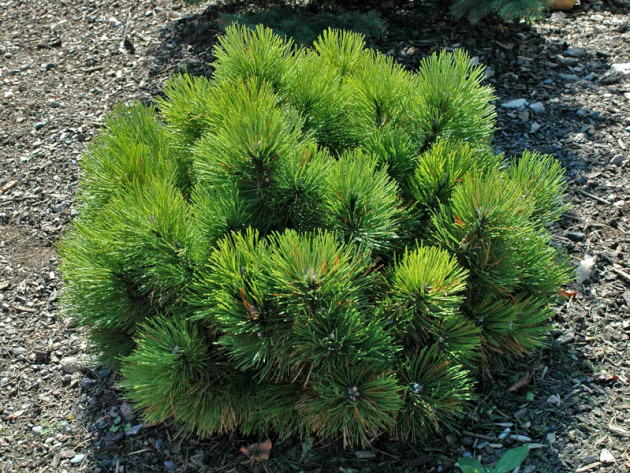
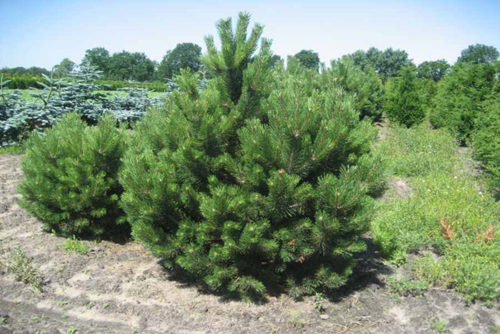
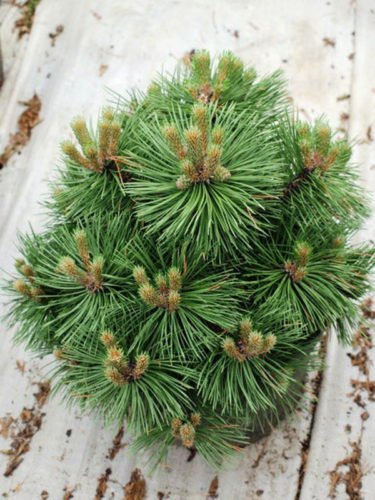

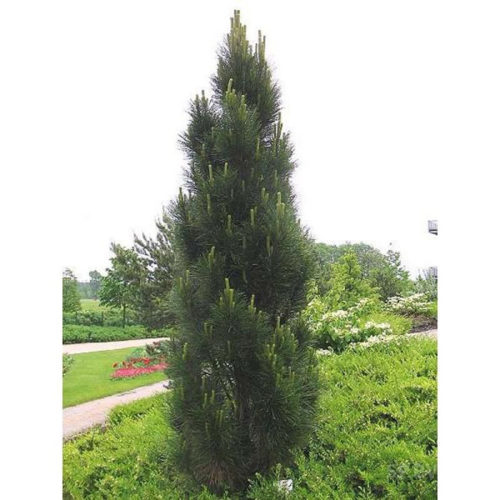
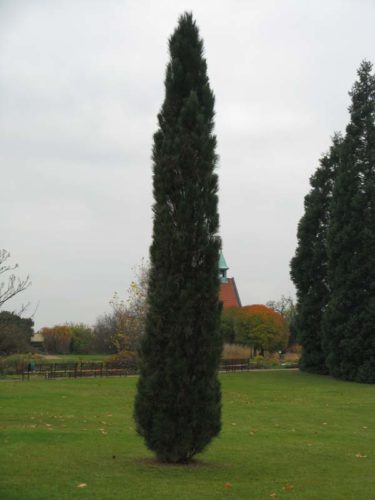
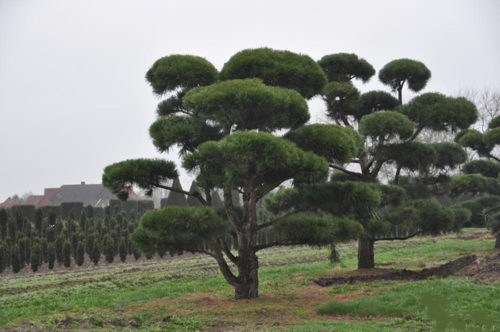
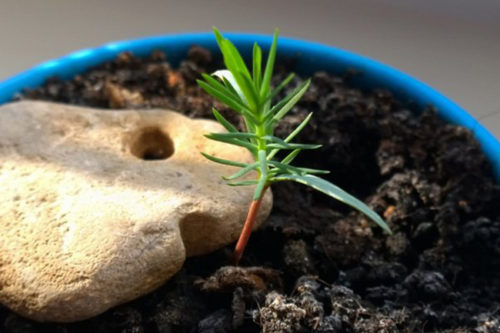
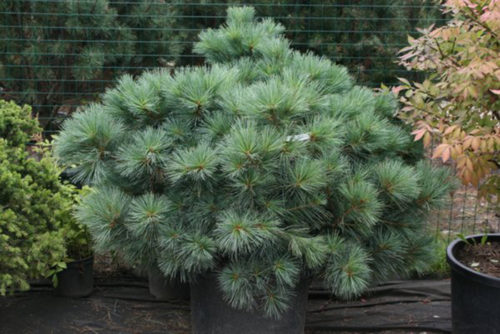
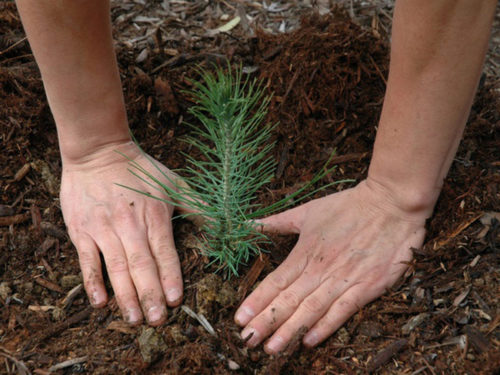

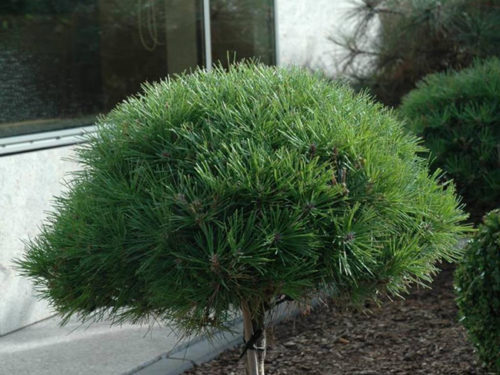
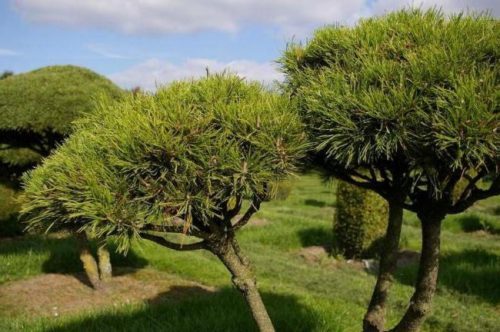












 Start a discussion ...
Start a discussion ...